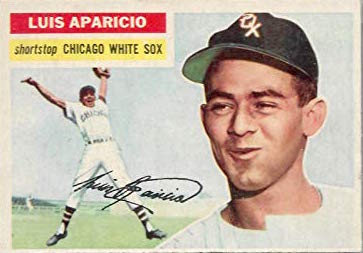Spirit of ’76: Rudy Schaffer, Paul Richards and Bill Veeck went all-out in Veeck’s return to Chicago on Opening Day.
1963
The start of the season found the White Sox in Detroit, and it was a highlight game for third baseman Pete Ward. Ward smacked a seventh-inning, three-run home run off Jim Bunning to push the Sox into the lead, and he also made a barehanded pick-up-and-throw-out of a slow roller hit by Al Kaline. The Sox would win, 7-5, and it would be the start of Ward’s co-American League Rookie of the Year campaign.
1971
It was the largest home opener in years, as 43,253 fans poured into Comiskey Park to see the “New Look” White Sox under GM Roland Hemond and manager Chuck Tanner. Ownership was completely caught with their pants down by the turnout, as concession stands and vendors ran out of items by the middle of the game!
The Sox wouldn’t disappoint, as Rich McKinney’s two-out, ninth-inning single scored Rich Morales with the game-winning run in the 3-2 victory over Minnesota.
1976
Owner Bill Veeck was back, and 40,318 fans turned out to say welcome home on Opening Day. They got their money’s worth, as in a tribute to the U.S. Bicentennial, Veeck, manager Paul Richards and front office executive Rudy Schaffer presented the colors dressed as the fife player, drummer and flag bearer of the Revolutionary War. Wilbur Wood tossed a complete game six-hitter and Jim Spencer had a two-run home run in the 4-0 win against Kansas City.
1977
The White Sox defeated the Blue Jays, 3-2, in Toronto for the franchise’s first-ever regular-season win outside of the United States. Oscar Gamble’s home run in the fourth put the Sox on top to stay, and the team added two more in the fifth. Chris Knapp got the win and Lerrin LaGrow earned his first save in what would be the best season of his career. He’d end 1977 with 25 of them and a 2.46 ERA.
1985
For future Hall-of-Famer Tom Seaver, it was his record 14th Opening Day start. For Ozzie Guillén, it was his major league debut. The two of them combined to help the Sox beat Milwaukee, 4-2, at County Stadium. Guillén would get his first hit in the big leagues that day, a bunt single off of future Sox pitcher Ray Searage in the ninth inning.
1990
It was the last home opener at the original Comiskey Park, and the Sox made it a good one in beating the Brewers, 2-1. Scott Fletcher’s sacrifice fly scored Sammy Sosa with what turned out to be the winning run. Barry Jones got the win, with Bobby Thigpen picking up the first of what would be a record-setting 57 saves in a season.
1993
During the home opener with the Yankees, Bo Jackson showed that the human spirit is simply amazing. Jackson, playing with an artificial hip, hammered a Neal Heaton pitch into the right field seats for a home run. It was Jackson’s first at-bat since his hip replacement, caused by an injury he suffered during his days as an All-Pro running back for the Raiders.
Jackson would end up with 16 home runs, including one in late September against Seattle that won the White Sox the Western Division title. As far as the baseball hit off Heaton, a fan returned it to him and he later had it encased and welded to his late mother’s headstone.











